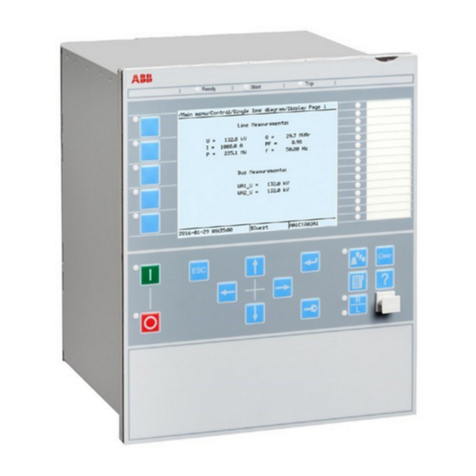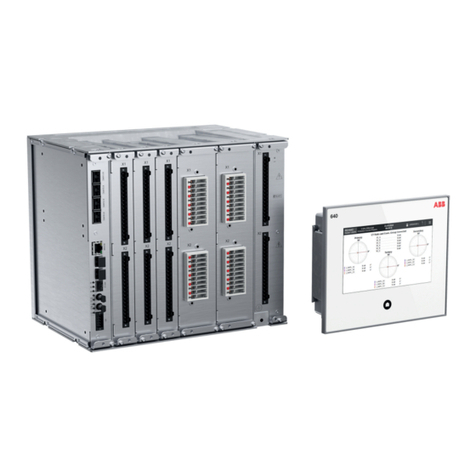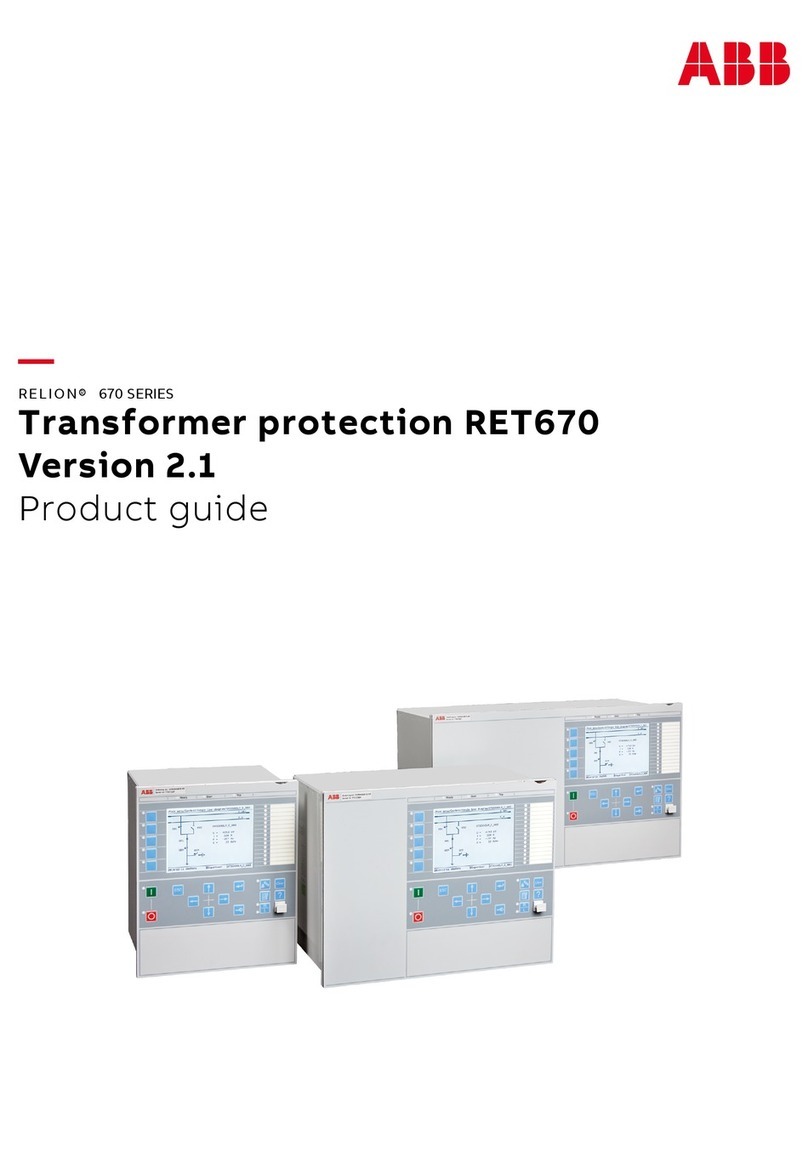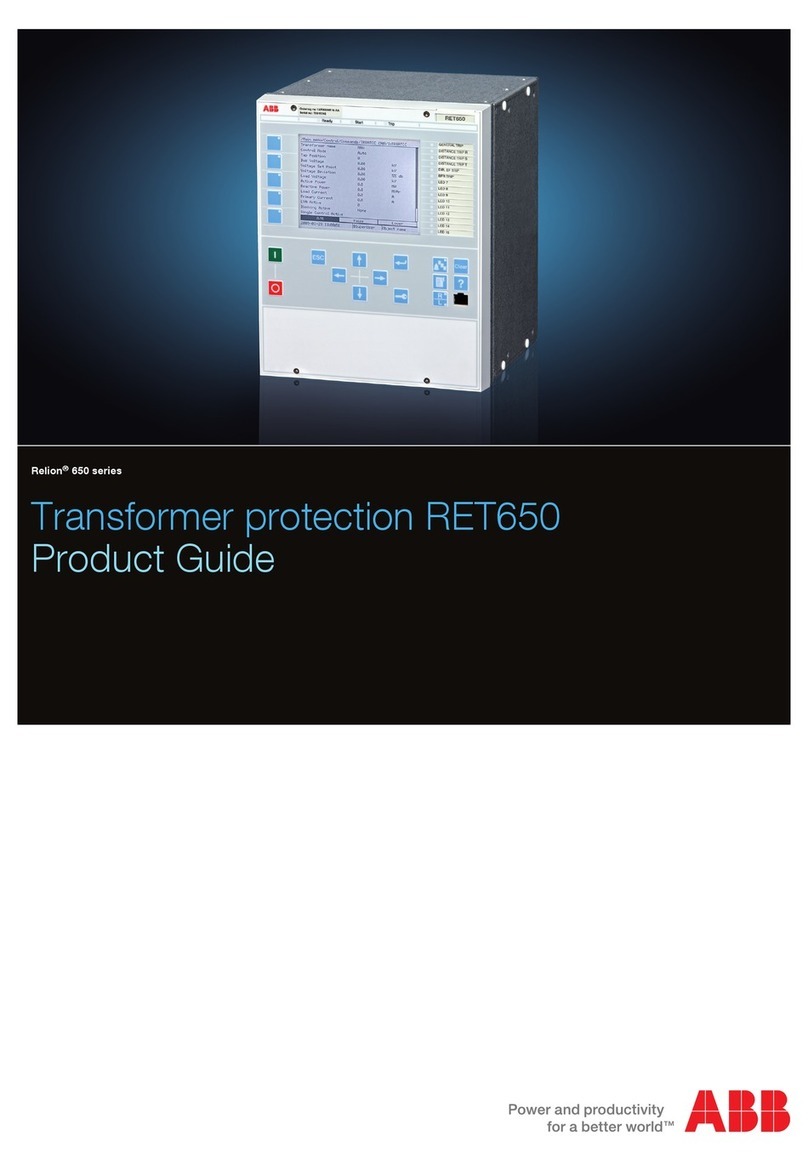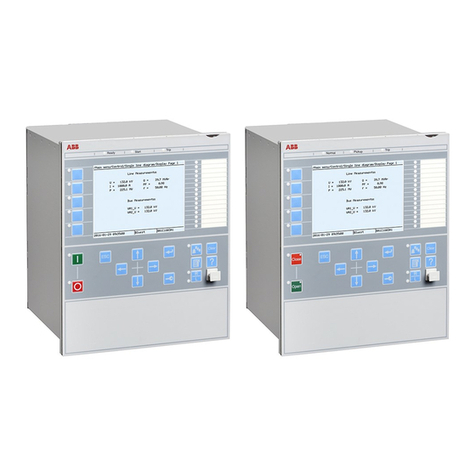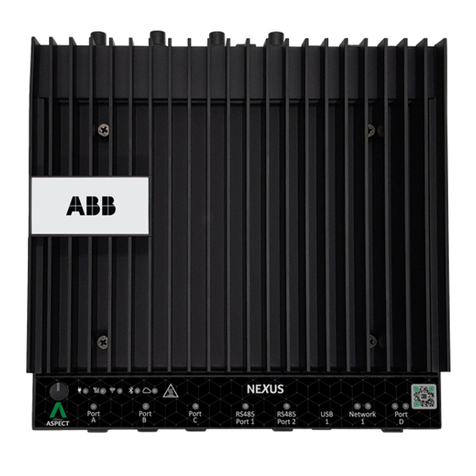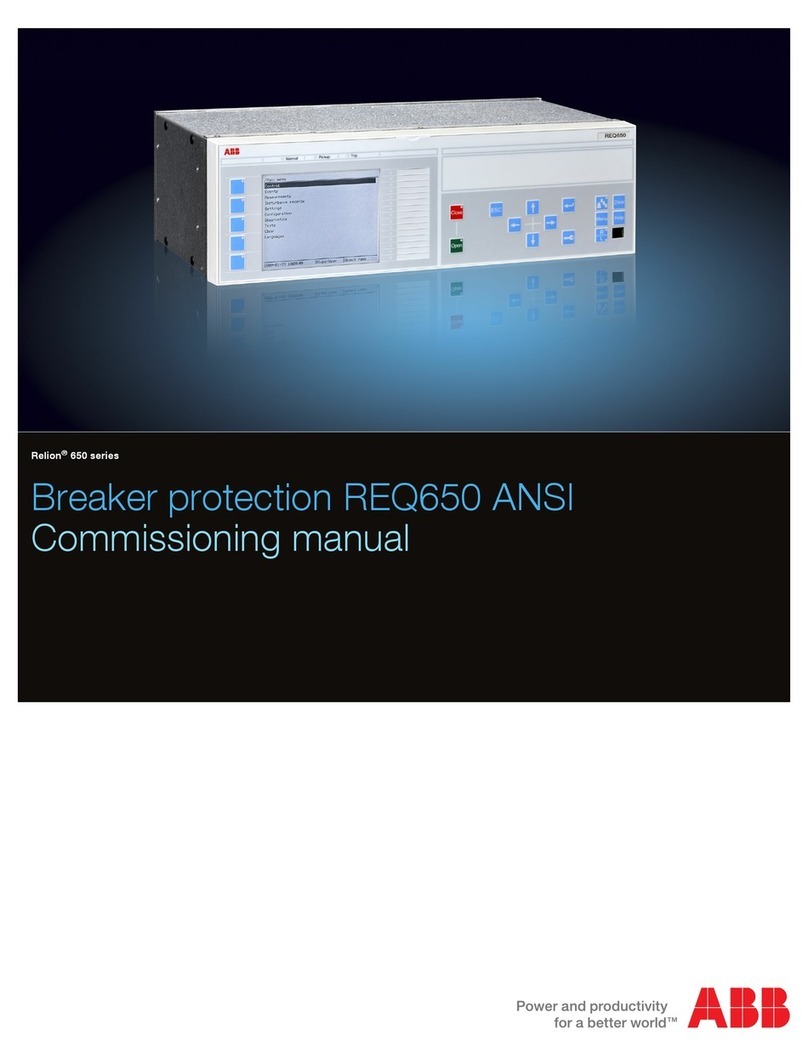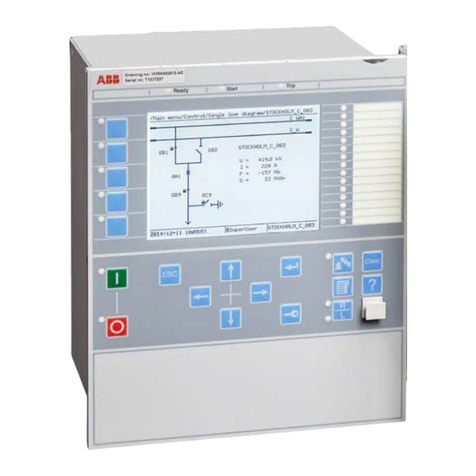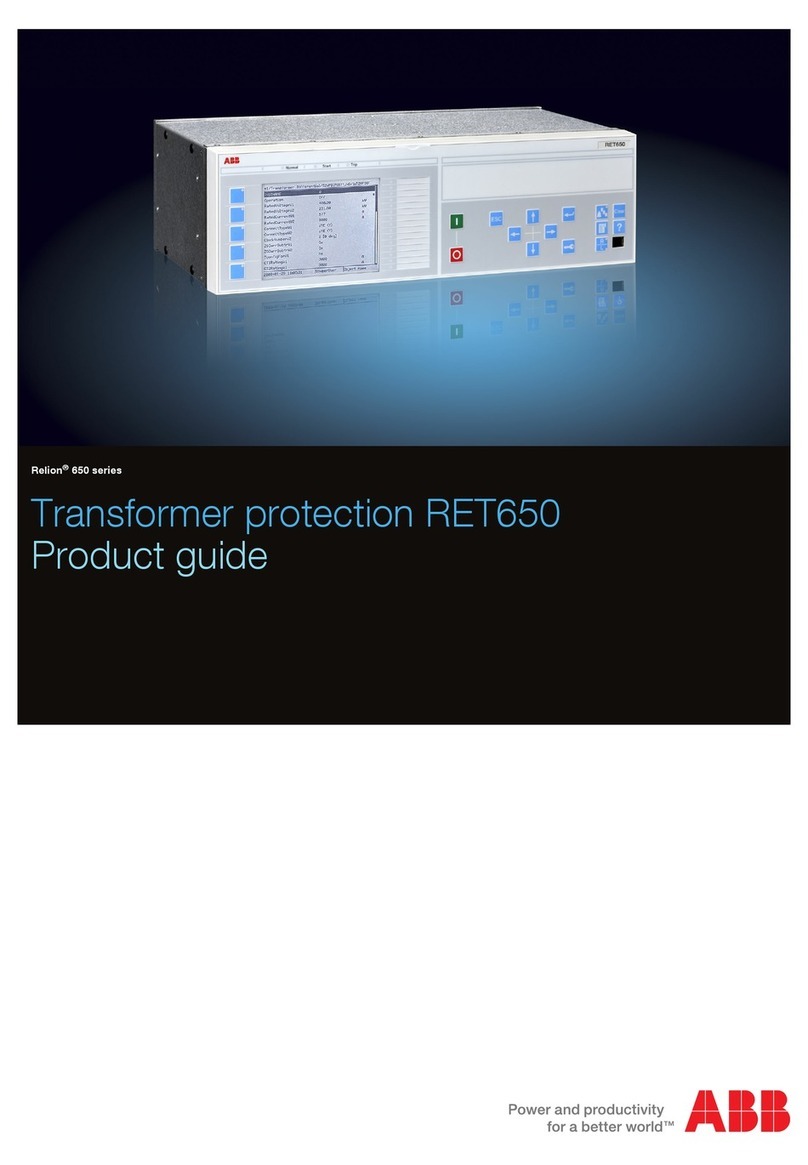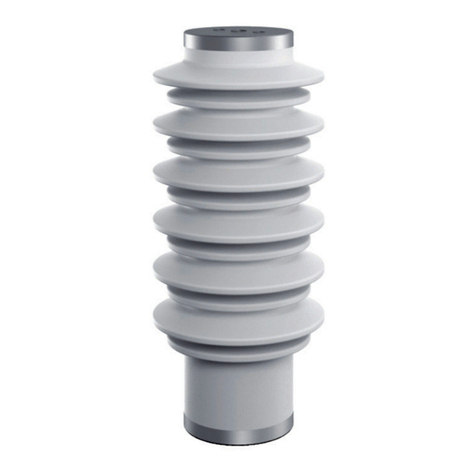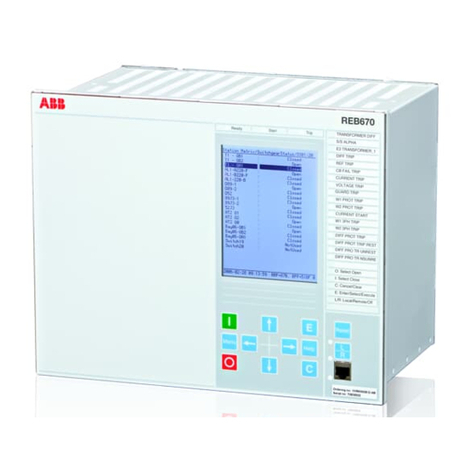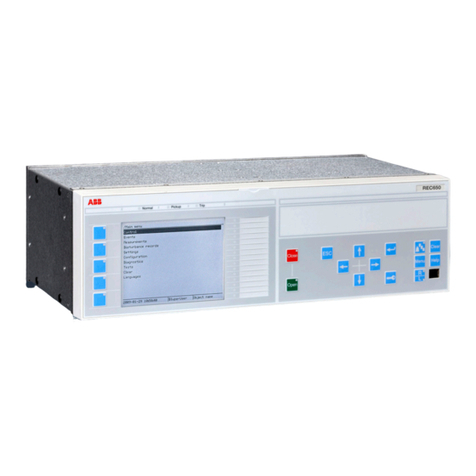
1. Description
Line distance protection IED
REL650
The REL650 is designed for protection,
monitoring and control of overhead lines and
cables. The IED includes extensive
functionality, with diverse application
opportunities, as well as hardware, to meet
specific requirements. The powerful IED
provides distance protection for all types of
overhead lines, cables and power network
earthing.
2. Application
The REL650 is used for the protection,
control and monitoring of overhead lines and
cables in solidly or impedance earthed
networks. The IED can be used up to the
high voltage levels. It is suitable for the
protection of heavily loaded lines and multi-
terminal lines where the requirement for fast
three-pole tripping is wanted.
The full scheme distance protection provides
protection of power lines with high
sensitivity and low requirement on remote
end communication. The five zones have
fully independent measuring and setting
which gives high flexibility for all types of
lines.
The modern technical solution offers fast
operating time of typically 1.5 cycles.
The auto-reclose includes priority features for
single-breaker arrangements. It co-operates
with the synchrocheck function with high-
speed or delayed reclosing.
High set instantaneous phase and earth
overcurrent, four step directional or non-
directional delayed phase and earth
overcurrent, sensitive earth fault, thermal
overload and two step under and overvoltage
protection are examples of the available
functions allowing the user to fulfill any
application requirement.
The distance and earth fault protection can
communicate with remote end in any
teleprotection communication scheme.
The advanced logic capability, where the user
logic is prepared with a graphical tool, allows
special applications.
Disturbance recording and fault locator are
available to allow independent post-fault
analysis after primary disturbances.
Two packages has been defined for following
applications:
• Five zone distance protection with
quadrilateral characteristic (A01)
• Five zone distance protection with mho
characteristic (A05)
The packages are configured and ready for
direct use. Analogue and tripping IO has
been pre-defined for basic use.
Add binary I/O as required for your
application at ordering. Other signals need to
be applied as required for each application.
The graphical configuration tool ensures
simple and fast testing and commissioning.
Line distance protection 1MRK 506 308-BEN -
REL650
Product version: 1.0 Issued: September 2009
Configured Revision: -
ABB 3

